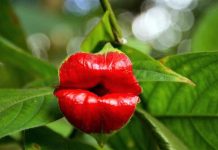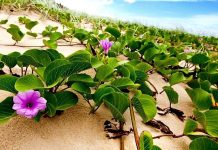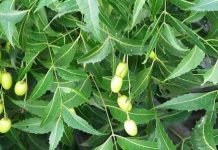Scientific name: Oroxylum indicum (L.) Kurz.
Family: Bignoniaceae
Synonym: Calosanthes indica (L.) Blume
Bengali/Vernacular name: Khona, Sona, Hona, Nasona, Patti, Dinga, Kanak (Bengali); Kanaidinga, Bhinga (Mymensingh); Thona (Noakhali, Rema-Kalenga).
Tribal name: Khama (Mogh); Hona gulu, Bailya, Taita, Krang-sia-bao (Chakma); Ayai-chai (Chak); Thleng kawng (Lushai); Egaroh, Kraat saba (Marma); Long koch sim (Murang); Thelengcong (Pangkhoa); Krang-sha-bawn (Rakhaing); Thakurung (Tripura); Kering, Kharing (Garo).
English name: Indian trumpet flower, Midnight horror.
Description of the plant: A small to medium sized deciduous tree. Leaves large, bi-or tripinnately compound, imparipinnate, leaflets opposite, elliptic-ovate, margin entire, subacuminate, base oblique or rounded, nerves inconspicuous above, prominent and minutely pubescent on lower surface. Inflorescence long terminal raceme. Flowers numerous in large, corolla usually purple, fleshy. Fruit an oblong, flat capsule, 45-75 cm long, tapering towards both ends, woody when mature.

Plant parts used: Bark.
Medicinal uses: Bark juice is taken for the treatment of asthma, colic, diarrhoea, dysentery, liver disorder, rabies.
Bark juice is taken thrice a day (50 ml amount each
time) until the jaundice is cured.
Decoction made from barks of the plant. Hot bath is advised to have with
extract once a day for three days to treat general weakness.
Pills made from bark of the plant are taken to treat hook worm infestation.
Paste made from bark is applied on the throat to treat tonsillitis.
Distribution: Occurs in the forests of Chittagong, Chittagong Hill Tracts, Cox’s Bazar, Noakhali, Dhaka-Tangail. Also found in village shrubberies and homestead throughout the country.
Is this plant misidentified? If yes, please tell us….
















… [Trackback]
[…] Here you can find 17131 more Information to that Topic: natureinfo.com.bd/oroxylum-indicum/ […]